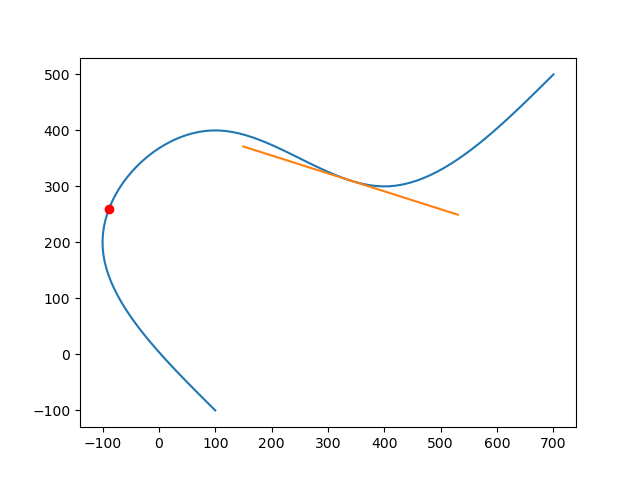TinySpline is a small, yet powerful library for interpolating, transforming, and querying arbitrary NURBS, B-Splines, and Bézier curves. The core of the library is written in ANSI C (C89) with a C++ wrapper for an object-oriented programming model. Based on the C++ wrapper, auto-generated bindings for C#, D, Go, Java, Javascript, Lua, Octave, PHP, Python, R, and Ruby are provided.
MIT License - see the LICENSE file in the source distribution.
- Object-oriented programming model
- B-Splines of any degree and dimensionality
- Spline interpolation
- Cubic natural
- Centripetal Catmull–Rom
- Evaluation
- Knots
- Sampling (multiple knots at once)
- Components (find y for given x)
- Knot insertion (refinement)
- Bézier curve decomposition
- Derivative
- Degree elevation
- Computation of rotation minimizing frames
- Morphing
- Serialization (JSON)
- Vector math
Releases can be downloaded from the releases page. In addition, the following package manager are supported:
Conan (C/C++):
https://conan.io/center/tinyspline
NuGet (C#):
<PackageReference Include="tinyspline" version="0.4.0.1" />Go:
go get github.com/tinyspline/go@v0.4.0Luarocks (Lua):
luarocks install --server=https://tinyspline.github.io/lua tinysplineMaven (Java):
<dependency>
<groupId>org.tinyspline</groupId>
<artifactId>tinyspline</artifactId>
<version>0.4.0-1</version>
</dependency>PyPI (Python):
python -m pip install tinysplineOn macOS, you may need to change the path to Python in
_tinysplinepython.so via install_name_tool.
See BUILD.md.
A variety of examples (unit tests) can be found in the test subdirectory. The examples subdirectory contains at least one example for each interface (target language).
The following listing shows a python example:
from tinyspline import *
import matplotlib.pyplot as plt
spline = BSpline.interpolate_cubic_natural(
[
100, -100, # P1
-100, 200, # P2
100, 400, # P3
400, 300, # P4
700, 500 # P5
], 2) # <- dimensionality of the points
# Draw spline as polyline.
points = spline.sample(100)
x = points[0::2]
y = points[1::2]
plt.plot(x, y)
# Draw point at knot 0.3.
vec2 = spline.eval(0.3).result_vec2()
plt.plot(vec2.x, vec2.y, 'ro')
# Draw tangent at knot 0.7.
pos = spline(0.7).result_vec2() # operator () -> eval
der = spline.derive()(0.7).result_vec2().norm() * 200
s = (pos - der)
t = (pos + der)
plt.plot([s.x, t.x], [s.y, t.y])
plt.show()The resulting image:
[1] is a very good starting point for B-Splines.
[2] explains De Boor's Algorithm and gives some pseudo code.
[3] provides a good overview of NURBS with some mathematical background.
[4] is useful if you want to use NURBS in TinySpline.

